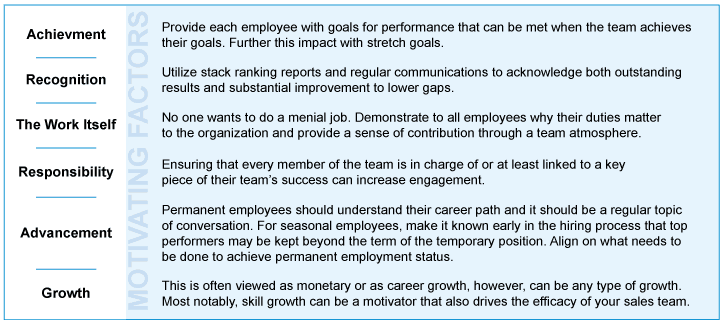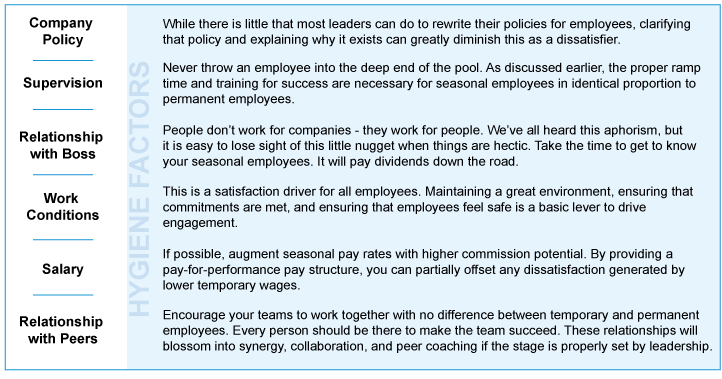Ah, the holiday season is almost here. Carols in the air, snow fluttering across the ground, and just outside the doors of your retail store are hundreds of sleep-deprived wild-eyed shoppers slugging down caffeine waiting for you to open the gate.
Black Friday: the starting line of the retail selling season is just around the corner.
Did you get sweaty palms reading that? As any retailer will tell you, asking if you’re ready on Black Friday is as helpful as checking your parachute after you’ve jumped out of the plane. The time to ensure you are ready is now, and the best way to do that is to have motivated people in the right place with the proper training.
Three Components of Employee Engagement
This post seeks to provide insight into three key components of employee engagement to assist in maximizing your seasonal spend: Onboarding, Motivation, and Scheduling.
Onboarding
Onboarding is an often-overlooked component of employee success, despite the many studies that demonstrate the necessity of investing in early training for employees. “Effective employee onboarding programs increase employee performance up to 11% over the first year, and discretionary effort increases by more than 20% when they onboard effectively.”
Effective onboarding is a tricky thing to nail down, especially when talking about seasonal hires. The definition most often defaults to the mechanics of the position and how to perform tasks.
However, a recent study showed that “43% of employee performance improvement was driven by indirect performance enablers like alignment and supervisory support.” (CLC, 2011)
Based on these findings an effective onboarding plan should include:
- An explanation of the role, the contribution they are making to the organization, and the long-term vision of the company.
- Well-defined performance goals and an explanation of how they contribute to the goals of the organization.
- Clear examples of what good work looks like along with instructions on how to get there.
Preparing Seasonal Employees for Success
There is no way to fully explore a topic as complex as employee engagement, or effective onboarding in an article of this length, but we can safely include the following as starting points to ensure your seasonal hires are set up for success:
- Have an onboarding plan that includes role purpose, role contribution, and how to succeed.
- Include seasonal employees as part of the team to ensure they stay aligned on goals.
- Work with leaders to ensure that they are providing excellent guidance to motivate employees.
Motivation
Motivating employees is more than contests and cheering. Long-standing psychological studies form the basis for our modern theories on driving employee engagement. If you want to realize the benefits of a seasonal workforce, you’ll need to ensure that beyond providing coverage they also provide value.
Using the Two-Factor Motivation Theory to Maximize Seasonal Employee Productivity
Frederick Herzberg developed his two-factor theory of motivation late in the 1950s and it is still considered one of the most cogent insights into driving employee engagement available today. His study focused on identifying situations in which employees felt either highly motivated or satisfied. The results showed the absence of one does not necessarily produce the other.
Think about your own experiences. When you are not dissatisfied, are you simultaneously satisfied? No. We measure motivation and satisfaction in degrees that should be managed to maximize employee engagement. Simply removing negative factors, which is a common approach to workplace engineering, is not enough. Real sales traction is achieved when motivation and job satisfaction are driven simultaneously.
Motivating Factors
The Motivating factors identified by Herzberg are listed below, along with potential actions you can take as a leader to drive motivation and increase job satisfaction.
Hygiene Factors
“Dissatisfiers are hygiene factors in the sense that they are maintenance factors required to avoid dissatisfaction and stop workers from being unhappy, but they do not create satisfaction themselves.” (TDS, 2016)
Scheduling
Scheduling is an underutilized performance driver. Often, the practice of scheduling hours becomes a matter of convenience rather than a matter of productivity. Employee availability may drive inopportune coverage patterns or place top salespeople in a position to contribute at a lower level to the organization. World-class retail teams do not allow these tendencies to dictate results. This is doubly important during the holiday season.
Anticipate Traffic Flow and Maximize
Discretionary hours should be allotted to mirror traffic flows. Discretionary hours are defined here as hours above operating minimums. Use whatever information you can find to understand your traffic forecast. This could be the prior year’s traffic per hour report, mall door swing counts, or just Google Maps data on dates with the heaviest traffic. Regardless of where you get the information, analyze it and spend your discretionary labor dollars only in areas where you’ll maximize your ROI.
Best Results = Best Shifts
Placing your best employees in a position to interact with the majority of your customers may seem like common sense, but the practice is far from commonplace. At the end of each week, employee performance should be evaluated and the top-selling employee, or seasonal worker, should be given the lion’s share of top-producing hours. It is important to base this evaluation on more than just production volume to avoid a system where hours drive the results and not the employee. Clearly focus on KPIs like productivity per door swing, average ticket, or other volume-dependent indicators of sales acumen.
Scheduling as Performance Management
Regardless of the business, there are always shifts that are less preferable than others. Be empowered to award shifts not only based on top sales factors but poor performance also. If an employee is not exhibiting effort, or is not producing results, covering some of the tougher shifts may provide them with the wake-up call required to address their performance. It also enables you to reward your top performers with better shifts at no additional cost.
Summary
The holiday season is a challenge every year and often can feel as though you are at the mercy of factors beyond your control. Weather, traffic, promotional budgets, assortment, and many other components need to be managed. The good news is that there are just as many components to the retail game that are within our control as leaders.
If you are willing to look at every part of the hiring, staffing, and scheduling process as an opportunity to drive exceptional results, you can have a very successful holiday season.
References:
Corporate Leadership Council. (2011). Driving a High-Performance Culture
TDS. (2016). Frederick Herzberg – Theory of Motivation



